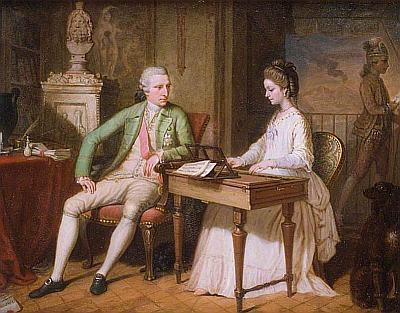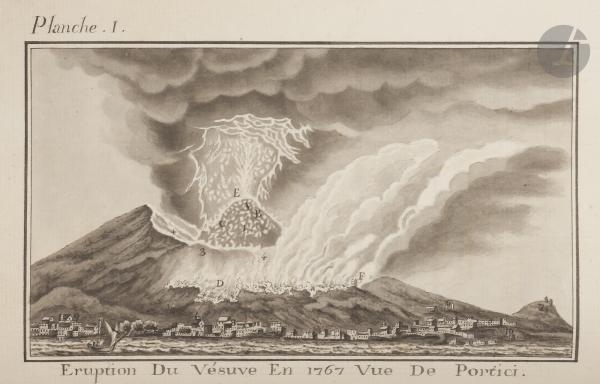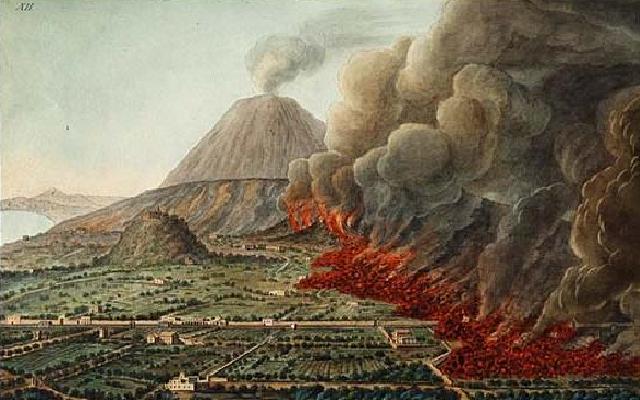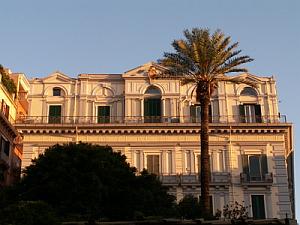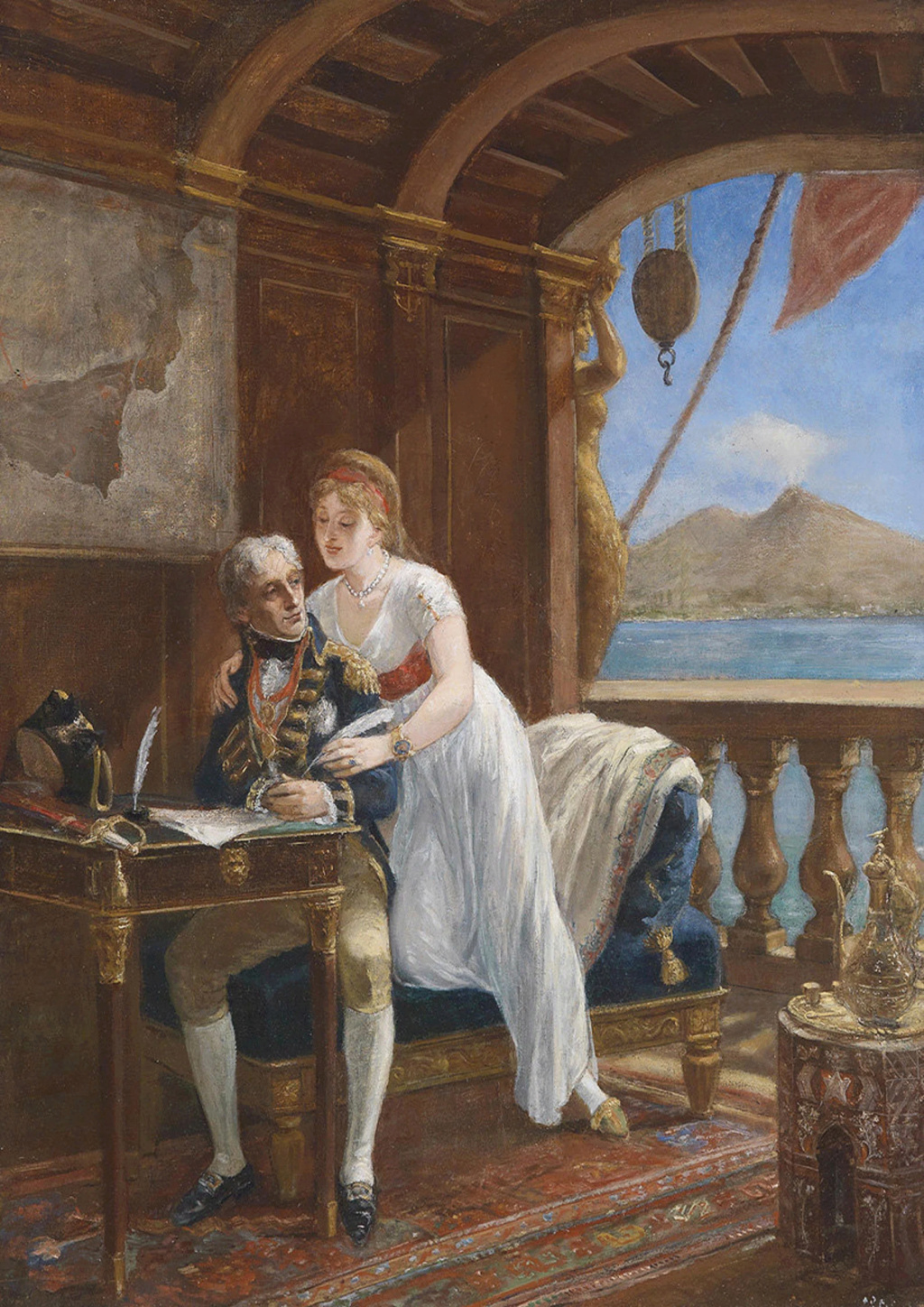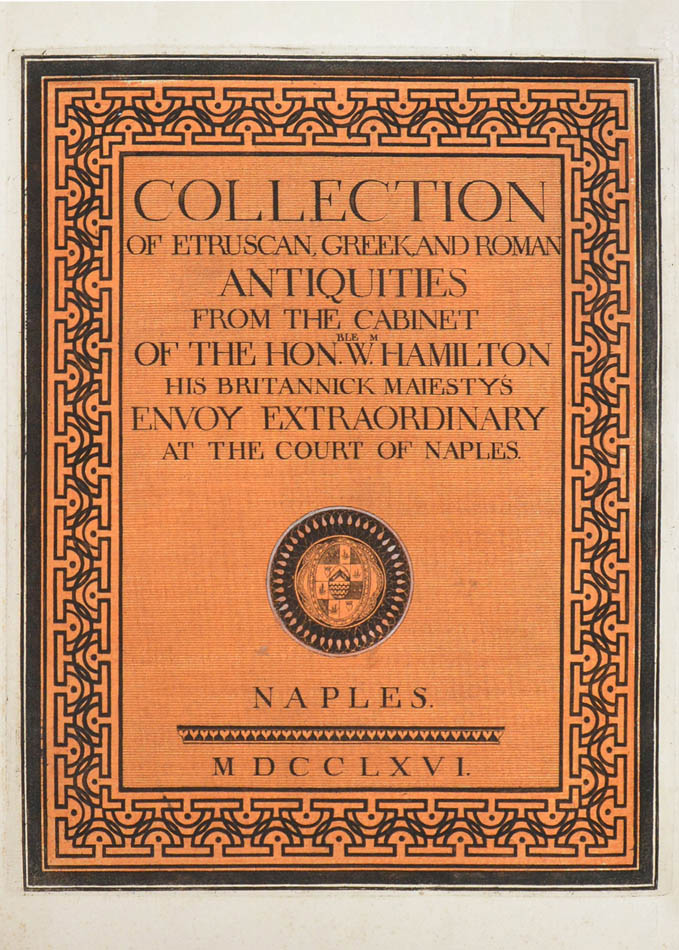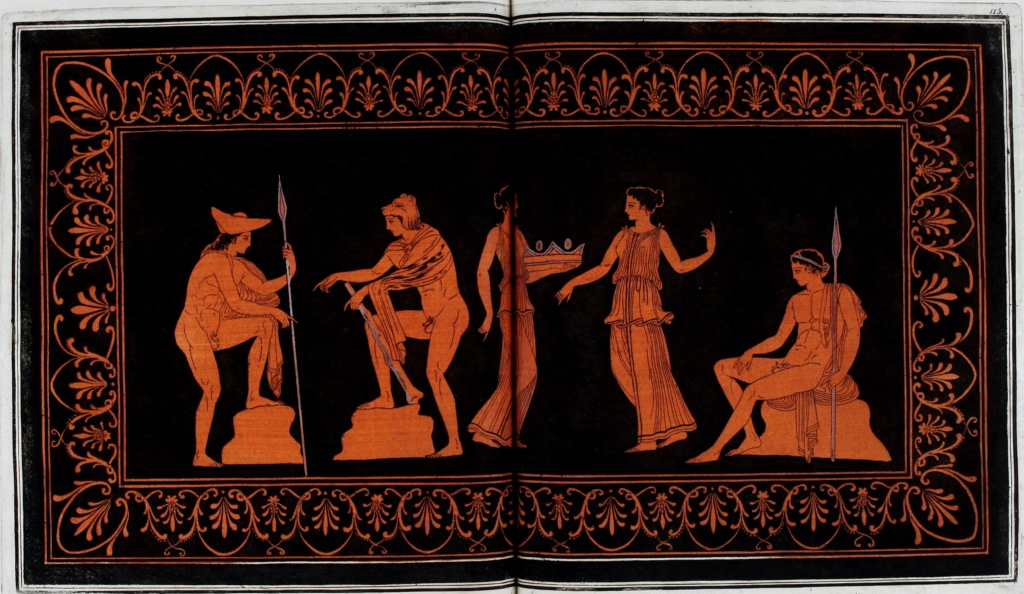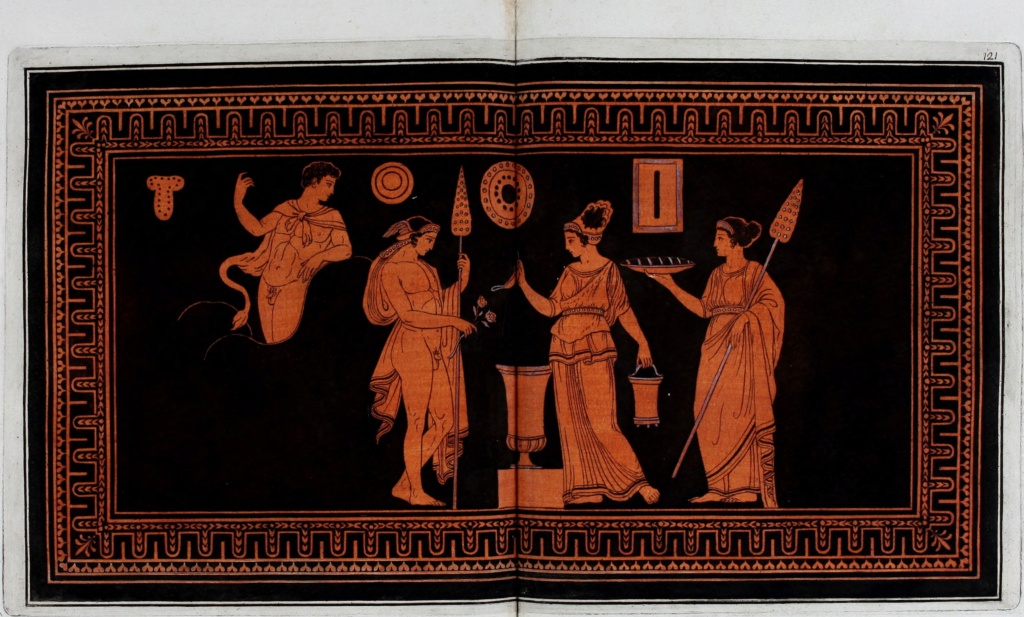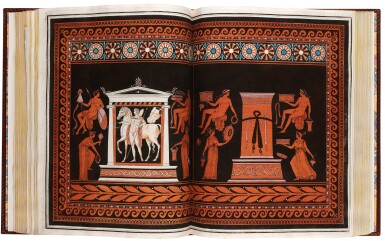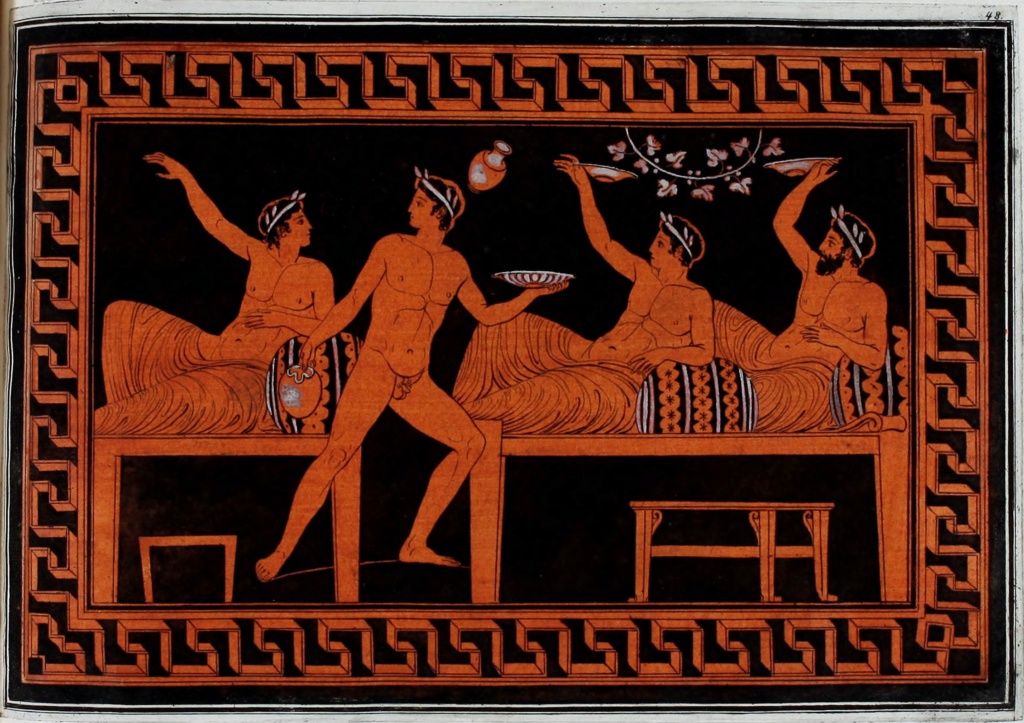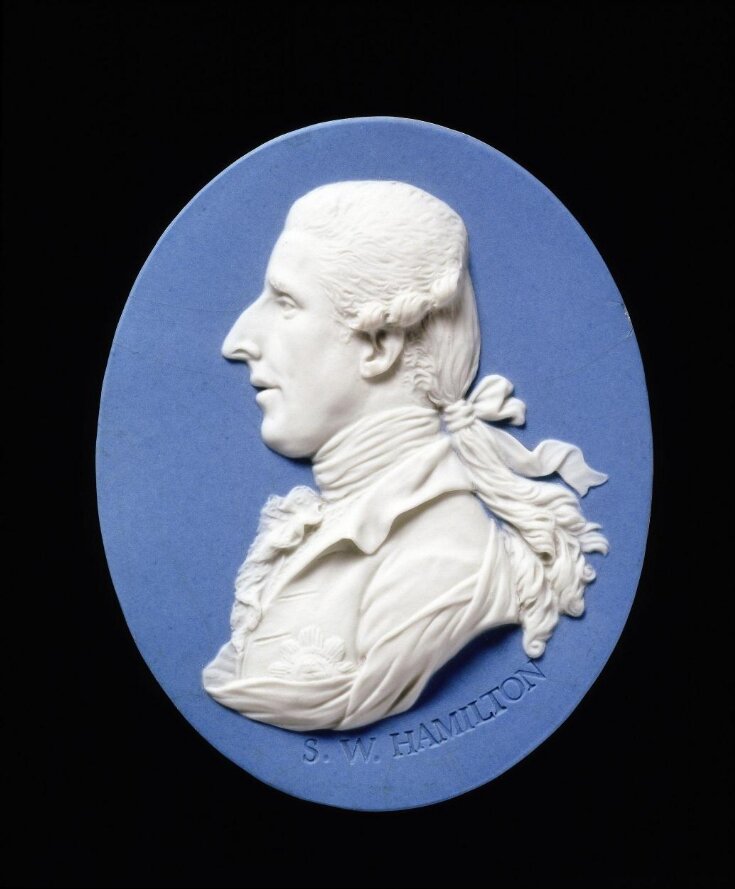Sir William Douglas Hamilton (1731-1803)
2 participants
LE FORUM DE MARIE-ANTOINETTE :: La famille royale et les contemporains de Marie-Antoinette :: Autres contemporains : les hommes du XVIIIe siècle
Page 1 sur 1
 Sir William Douglas Hamilton (1731-1803)
Sir William Douglas Hamilton (1731-1803)
William Douglas Hamilton (13 décembre 1730 – 6 avril 1803), est un aristocrate écossais, diplomate britannique, antiquaire, archéologue et volcanologue.
Sir William Hamilton (1730-1803) est né en Écosse, quatrième fils d'Archibald Hamilton, troisième duc de Hamilton et gouverneur britannique de la Jamaïque. Grâce aux relations étroites de ses parents avec la famille royale, William Hamilton grandit avec le futur roi, George III, son frère de lait. Il sert dans l'armée avant son mariage, en 1758, avec Catherine Barlow, morte en 1782 sans lui donner de postérité.
En 1764, Hamilton est nommé à la Cour des Bourbons de Naples en tant qu'envoyé extraordinaire de Grande-Bretagne , ministre plénipotentiaire, sans porter le titre "ambassadeur" que tout le monde lui donne pourtant .
Porté par un vif intérêt pour l'histoire, l'art, les sciences naturelles et par un sens aigu de l'observation, sa production de publications dans divers domaines est considérable et précieuse.
En 1770, la Royal Society lui attribue la médaille Copley pour son ouvrage Voyage au Mont Etna.
. Nommé membre de la Royal Society of London, il est anobli en 1772.
Hamilton est un antiquaire, archéologue et vulcanologue passionné. Il collectionne des vases grecs et autres artefacts qui formeront le premier noyau de la section romaine et grecque du British Museum. En tant qu'archéologue, il participe activement aux premières fouilles de Pompéi et d' Herculanum tout en étudiant l'activité volcanique et sismique locale. Il n'était certainement pas un géologue de salon - en témoigne ce passage de ses Observations sur le mont Vésuve , l'Etna et d'autres volcans (pub. T. Cadell, Londres, 1774) :
"... J'ai passé toute la journée et la nuit du 12 sur la montagne, et j'ai suivi le cours de la lave jusqu'à sa source même : elle a éclaté du flanc de la montagne, à environ un demi-mille de l'embouchure du volcan. , comme un torrent, accompagné de violentes explosions, qui projetaient des matières enflammées à une hauteur considérable… »
Notre sujet :
https://marie-antoinette.forumactif.org/t2514-le-vesuve-decrit-par-les-contemporains-du-xviiie-siecle?highlight=VESUVE
De plus, Hamilton a publié, en 1776, Campi Phlegraei . Observations sur les volcans des Deux-Siciles , telles qu'elles ont été communiquées à la Société royale de Londres (Naples 1776-79) avec des illustrations de Pietro Fabris
Il a également publié dans Philosophical Transactions of the Royal Society of London, Vol. 73, (1783) le premier récit en anglais du tremblement de terre dévastateur de Calabre de cette année-là; son rapport est sa traduction d'une lettre qu'il avait reçue du comte Francesco Ippolito détaillant les effets de la catastrophe.
Sur le plan diplomatique, Hamilton joue un rôle déterminant dans la réalisation de l'alliance entre la Grande-Bretagne et le royaume de Naples par le biais d'un traité signé le 12 juillet 1793. Selon les termes du traité, Naples fournit 6 000 hommes pour le service dans la guerre de la Grande-Bretagne contre la France, notamment à Toulon où les Britanniques occupent la ville contre l'armée républicaine française, finalement expulsés par le jeune Napoléon Bonaparte.
Les Britanniques sont autorisés à utiliser le port de Naples comme base. Ils joueront un rôle déterminant de protection de la famille royale des Bourbons en sécurité en Sicile et les y abritant pendant la période de la République napolitaine(1799) et, peu de temps après, la domination française de Naples pendant une décennie sous Murat .
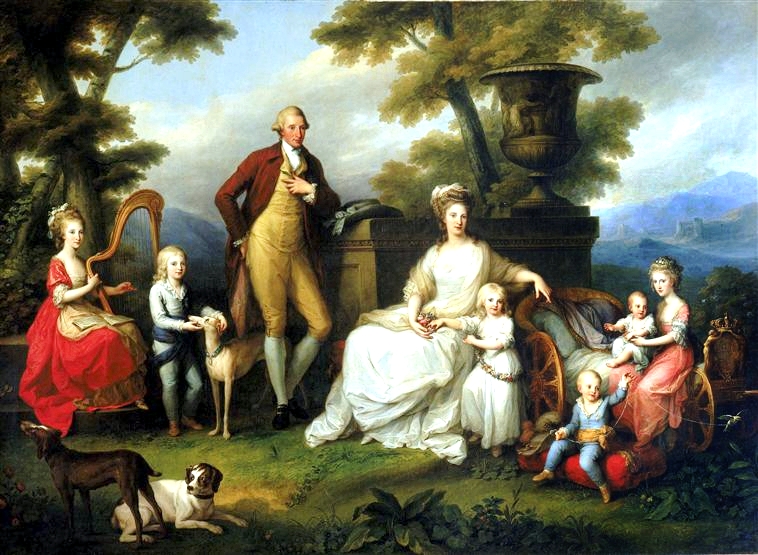
Marie-Caroline et Ferdinand Ier, roi des Deux-Siciles, avec leurs enfants (Marie-Thérèse, jouant de la harpe, François, debout près de son chien, Marie-Christine debout contre sa mère, Gennaro assis sur un coussin, et Louise-Marie tenant dans ses bras Marie-Amélie, le dernier enfant du couple est mort-né durant la réalisation du tableau, le peintre qui avait déjà représenté le bébé dans le berceau, peint un voile par dessus)
(tableau d'Angelica Kauffmann, 1783).
Au cours de son long mandat d'ambassadeur, Hamilton est l'ami de nombreuses célébrités du Grand Tour , dont Mozart et Goethe, ce dernier ayant séjourné dans la résidence d'Hamilton, la villa Sessa .
Des sources allemandes affirment que Hamilton mérite, en vertu du partage de sa connaissance de l'Italie avec Goethe et d'autres, un certain crédit dans le développement de ce qu'on appelle le Weimarer Klassik dans la littérature allemande ou classicisme de Weimar, mouvement littéraire allemand de la fin du XVIIIème siècle et du début du XIXème siècle, marqué par l'activité d'un quatuor d'écrivains installés dans la ville de Weimar : Christoph Martin Wieland, Johann Gottfried von Herder, Johann Wolfgang von Goethe et Friedrich von Schiller, après le premier voyage en Italie de Goethe en 1786, et jusqu'à la mort de Schiller en 1805.
En 1786 il fait la connaissance d'Emma Lyon, une jeune femme qui lui est envoyée par son neveu Charles Greville. Comme la plupart des hommes qui gravitent autour d'elle, Sir William est frappé par la beauté d'Emma.
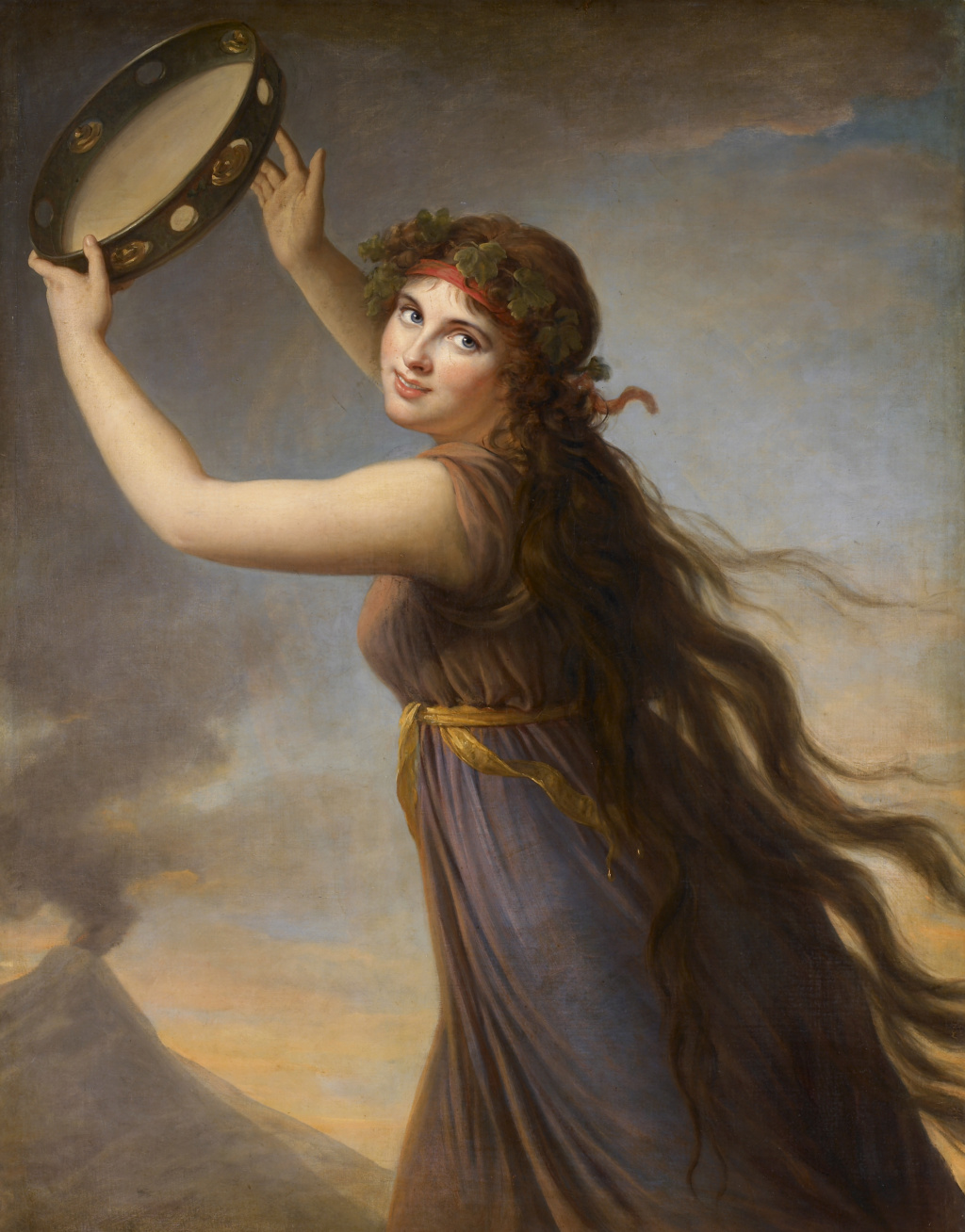
Portrait d’Emma, Lady Hamilton, en Bacchante
Élisabeth Vigée Le Brun
Huile sur toile, vers 1790
Image : Walker Art Gallery / Commons Wikimedia
Elle exécute des danses lascives inspirées par des figures de la chorégraphie classique, pour lui et ses invités, y compris Goethe, tout en ne portant aucun sous-vêtement. Ils se marient le 6 septembre 1791 à St George's Hanover Square, Londres. Il a 60 ans ; elle 26.
Quand survint le fameux Horatio Nelson
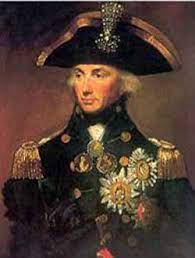
un homme qu'Hamilton admire et qui tombe amoureux d'Emma, la jeune femme s'engage avec lui dans une liaison qu'étrangement son mari encourage.
Notre sujet :
https://marie-antoinette.forumactif.org/t577-emma-hart-lady-hamilton-nee-amy-lyons?highlight=hamilton
Sir William demanda finalement à être rappelé en 1796, mais ne reçut la nouvelle que sa demande avait été acceptée qu'à la fin de 1799. Les forces royalistes des Bourbons avaient repris le royaume de Naples aux Français. Hamilton eut la chance de revoir Naples, la ville où il avait joué un rôle si actif puis retourna à Londres et mourut peu de temps après.
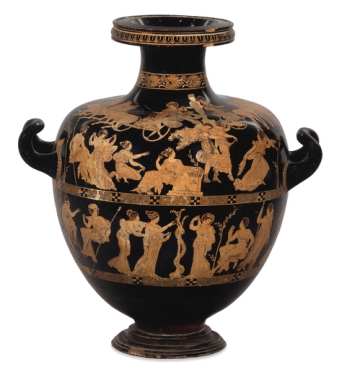
Cette jarre à eau à figures rouges est considérée comme la plus belle
de la première collection de vases grecs de Hamilton.
Hamilton était devenu marchand d'antiquités au début de son mandat d'ambassadeur. En quelques années, il avait acheté des collections privées entières de vases, de marbres, de sculptures, etc ... Il exportait et vendait bon nombre de ces objets à l'étranger malgré le fait qu'il était illégal de le faire.

Il vend sa première collection au British Museum en 1772. Elle forme alors alors le noyau du département des antiquités du musée. Des illustrations commentées de cette première collection ont été publiées entre 1766 et 1776 à Naples en 4 volumes sous le titre A Collection of Etruscan, Greek, and Roman Antiquities from the Cabinet of the Hon. W. Hamilton .
La première collection a influencé des artistes de l'époque comme Angelika Kauffmann et Josiah Wedgwood, fondateur de la célèbre entreprise de poterie britannique.
Une partie de la deuxième collection (1798), cependant, a été perdue en mer lorsque le navire transportant la collection, le HMS Colossus , a coulé au large des îles Scilly en décembre 1798 ...
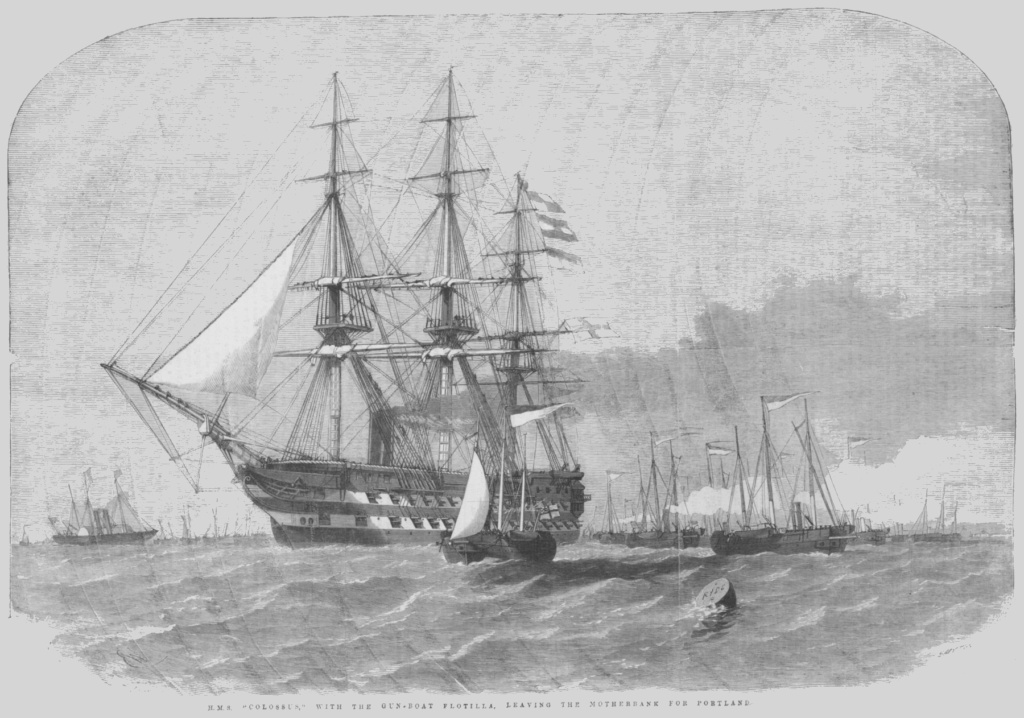
HMS Colossus (1848)
1848 Vanguard-class ship of the line of the Royal Navy /
From Wikipedia, the free encyclopedia
Sa récupération récente a réussi à récupérer certains des éléments. La première collection était vaste et comprenait des centaines de vases, terres cuites, bronzes, bas-reliefs, pierres précieuses, pièces de monnaie et divers objets sacrificiels, agricoles et domestiques.
Lord Hamilton avait une renommée européenne.
Le 29 août 1776, son ambassadeur Creutz écrivait de France à Gustave III :
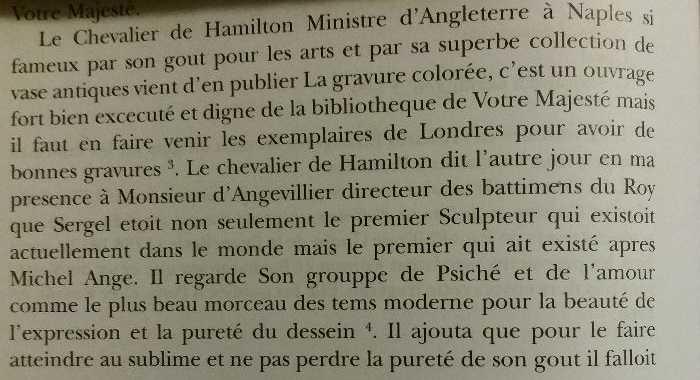

Dans l'aventure de l'archéologie minutieuse et respectueuse, Hamilton peut être considéré comme un pionnier. Il n'était pas du tout favorable à l'approche pêle-mêle de l'époque : découvrir les ruines, repartir avec ce que l'on peut et reboucher les trous, le tout sans prendre de notes. Il préférait dessiner les ruines in situ et rassembler les objets trouvés ensemble dans le but de les exposer.
http://www.naplesldm.com/Hamilton.php
_________________
... demain est un autre jour .

Mme de Sabran- Messages : 55509
Date d'inscription : 21/12/2013
Localisation : l'Ouest sauvage
 Re: Sir William Douglas Hamilton (1731-1803)
Re: Sir William Douglas Hamilton (1731-1803)
Prochainement présenté en vente aux enchères...
Portrait of Sir William Hamilton (1730–1803)
Sir William Beechey (1753-1839)
William Hamilton half-length, wearing diplomatic uniform, with decorative gold frogging, holding a letter in his left hand
oil on canvas unframed: 90.2 x 69.9 cm ; framed: 109.9 x 89.9 cm
Provenance :
Commissioned from the artist by Lord Nelson (1758–1805) by whom gifted to Sir William Hamilton
(...)
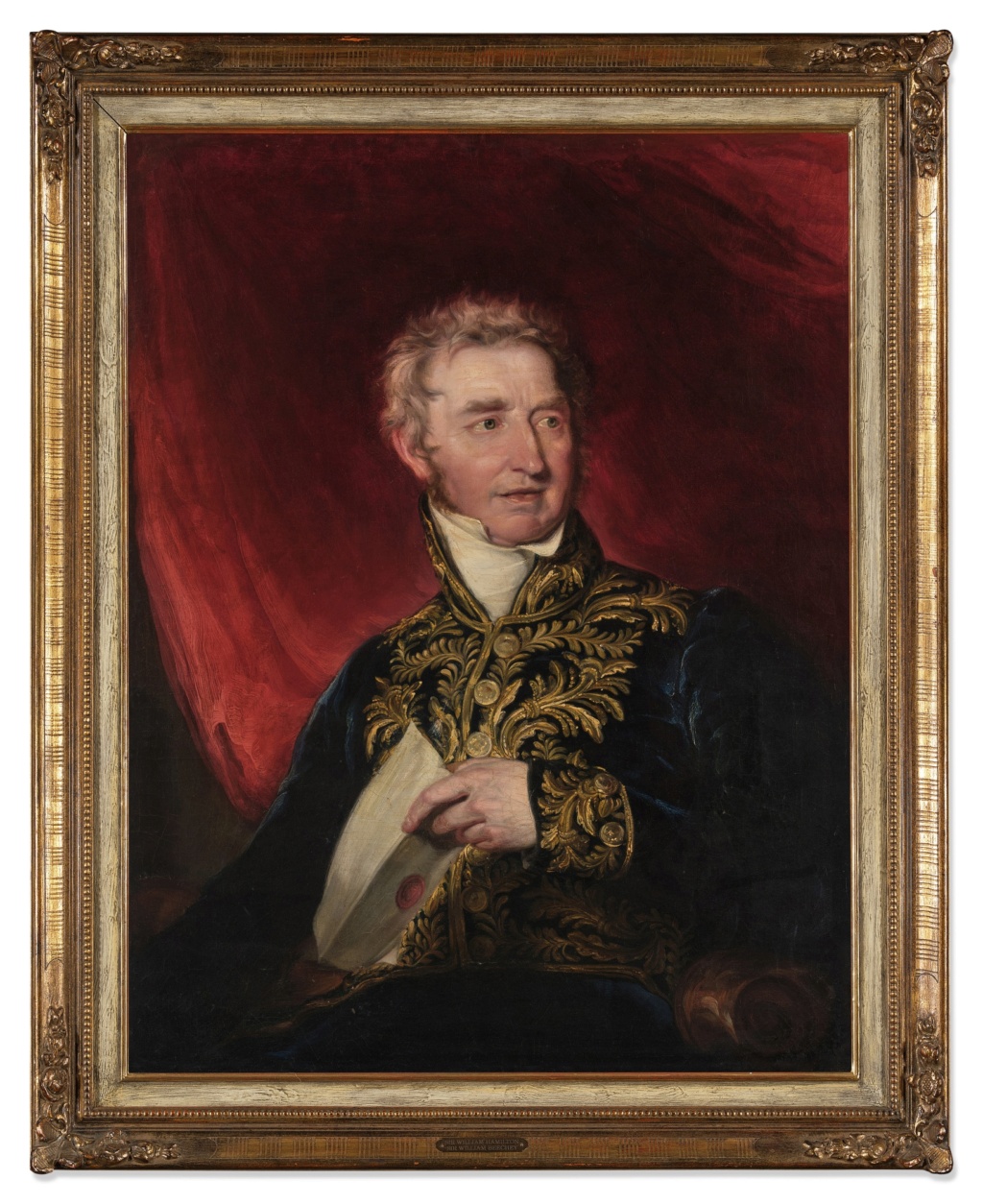
Catalogue Note :
This portrait is the last likeness made of one of the most accomplished men of the late eighteenth century, Sir William Hamilton KB, PC, FRS, FRSE (1730–1803). Furthermore, this portrait is significant as it was commissioned by Lord Admiral Horatio Nelson (1758–1805), with whom Hamilton shared his wife Lady Emma in one of Britain's most scandalous ménages à trois.

The sitter
Sir William Hamilton was the fourth son of Lord Archibald Hamilton and his wife Lady Jane Abercorn. He was the grandson to both William, 3rd Duke of Hamilton, and James, 6th Earl of Abercorn. Notably, Sir William's mother Jane was mistress to Frederick Prince of Wales between the years 1736 and 1745, proximity which also came with the responsibilities of Lady of the Bedchamber and Mistress of the Robes to the Princess of Wales. William's true parentage has been the speculation of later biographers, fuelled by knowledge that both he and the young Prince George (later George III) were brought up together and called each other 'brother'.1
Hamilton's career in the army was soon embellished with appointments as Equerry to George Princes of Wales in 1751 and eventually Equerry to George III on his accession in 1760. By far the most important development of his life was his appointment as Envoy Extraordinary to the Court of Naples in 1764.
In Naples a burgeoning passion became an obsession, and Hamilton took his time in Italy to amass a serious collection of antique sculpture, gems and vases.2 Hamilton might be counted among the top tier of antiquarians who enriched the collections of the fledging British Museum during the late eighteenth century. His art collection contained exceptional examples of Old Master portraiture too. This included Diego Velázquez's Portrait of Juan de Pareja (The Metropolitan Museum of Art, New York), and Hans Holbein the Younger's A Lady with a Squirrel and a Starling (The National Gallery, London).3
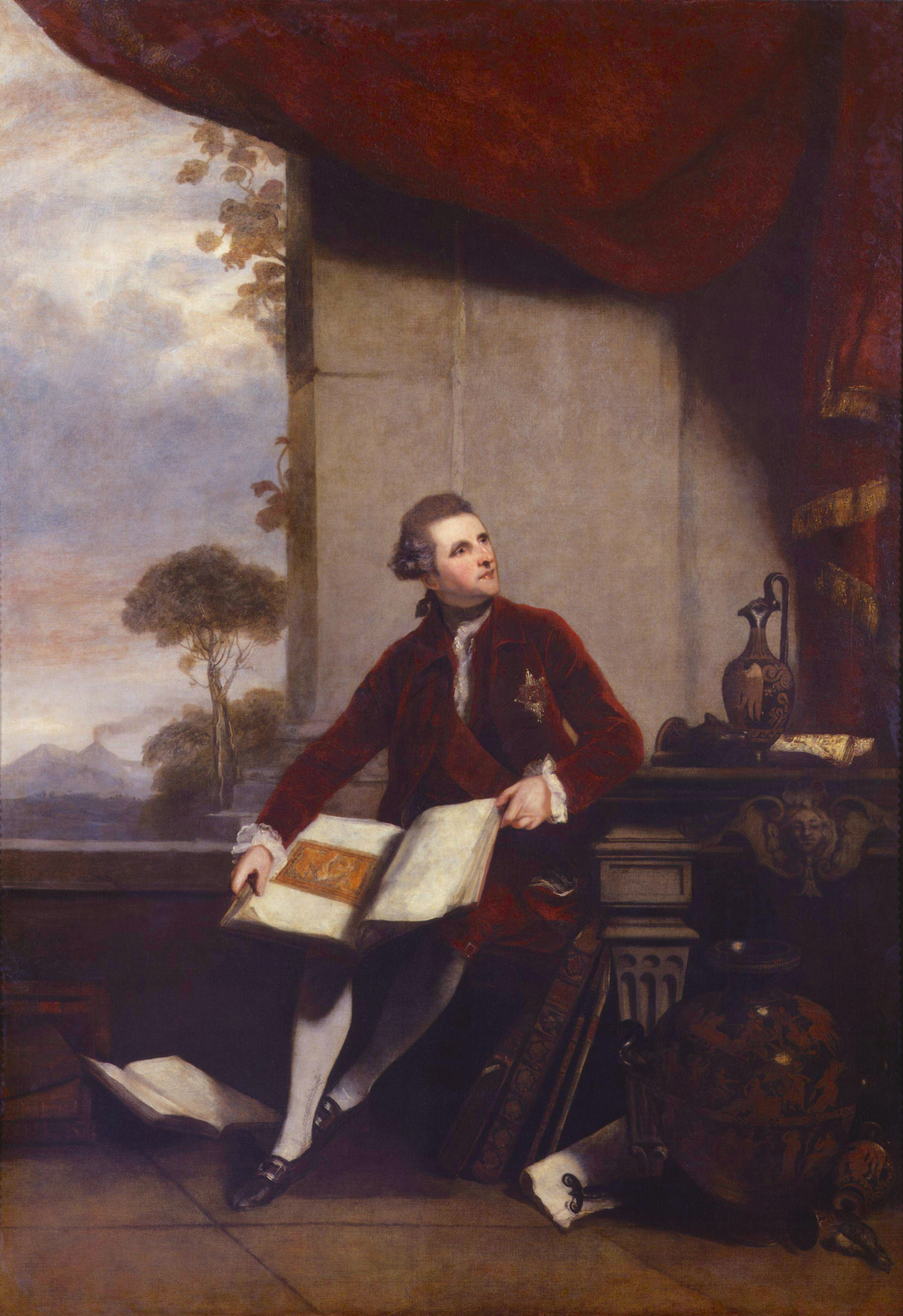
Sir William Hamilton by Sir Joshua Reynolds
Oil on canvas, 1777
National Portrait Gallery (London)
Image : Commons wikimedia
Hamilton's private life was also not without intrigue. After the death of his first wife Catherine Barlow in 1782, Hamilton managed to secure the affection of Emma Hart, the young and beautiful mistress of his nephew Charles Francis Greville (1749–1809). Although sent to Naples on the ruse that her lover and supporter Charles would follow, she eventually succumbed to a romance with the ageing Hamilton. The mis-matched couple eventually married in 1791 and Emma became Lady Hamilton (...).
Fate would intervene again in 1797, when the dashing Rear-Admiral Horatio Nelson arrived in Naples and quickly captured the attention of Emma, with acceptance from the increasingly frail Hamilton. Emma, Nelson and Hamilton would eventually settle upon a sensational ménage à trois , which included touring England together much to the pleasure of crowds waiting to see Britain's naval hero. Dubbed the trio juncta in uno (a reference to the motto of the Order of the Bath, to which both Hamilton and Nelson belonged) the three lived together for many years in apparent harmony.
, which included touring England together much to the pleasure of crowds waiting to see Britain's naval hero. Dubbed the trio juncta in uno (a reference to the motto of the Order of the Bath, to which both Hamilton and Nelson belonged) the three lived together for many years in apparent harmony.
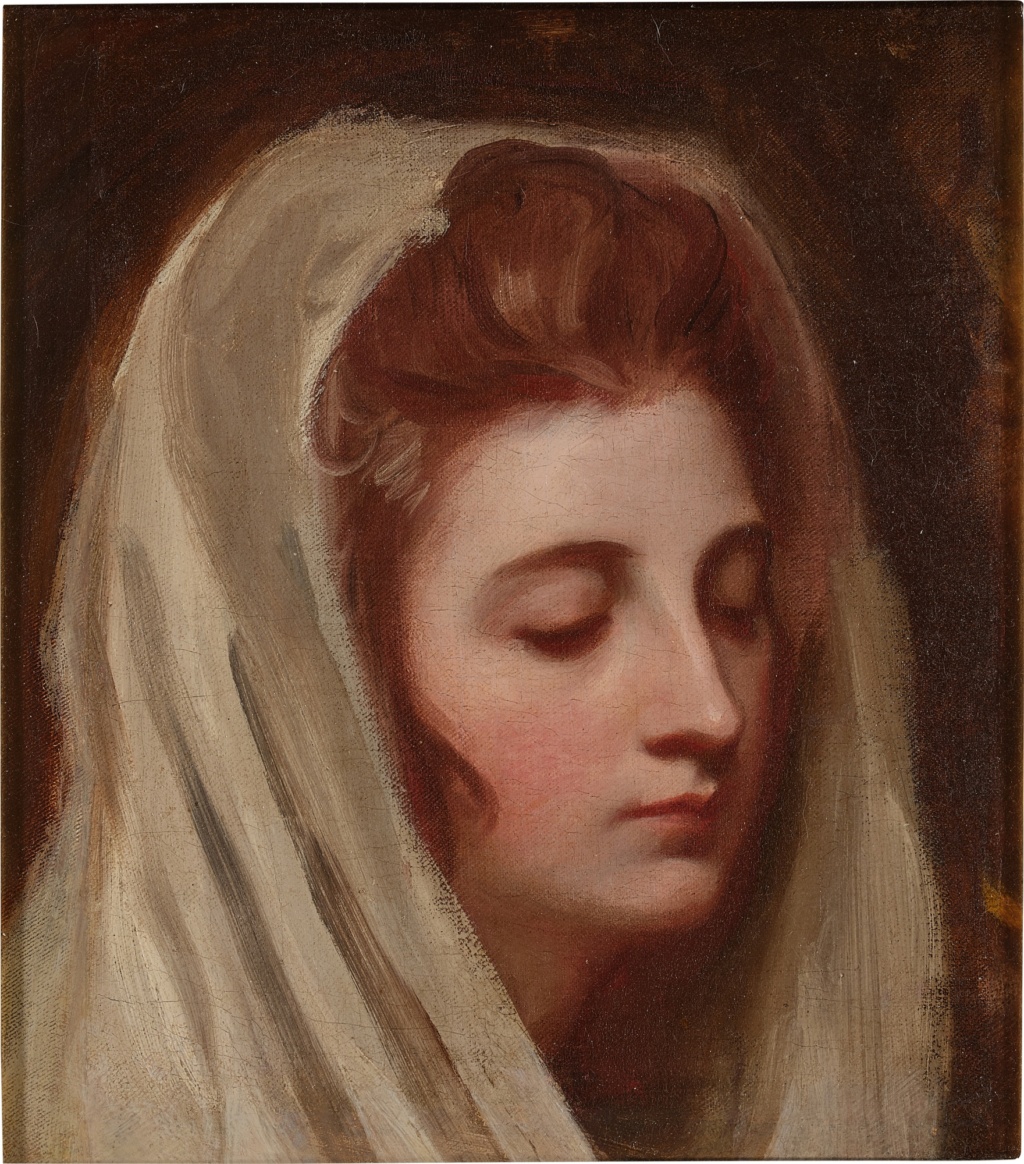
A portrait of Emma Hamilton (1765–1815), bust-length, wearing a white cowl with eyes averted
By George Romney
oil on canvas unframed: 37.8 x 33 cm ; framed: 54.3 x 49.9 cm
Source et infos complémentaires : Sotheby's Londres - Vente Old Masters du 8 décembre 2022
Hamilton was painted by many of the leading portrait painters of the period. His likeness was painted several times by Sir Joshua Reynolds, who depicted him both as a scholar and a collector and connoisseur of antiquities and vases. In comparison to Reynolds's more scholarly depictions, David Allan's ostentatious full-length of Hamilton in the full regalia of a Knight of the Order of the Bath is a more obvious celebration of his achievements at court.4 The large number of official engravings after Hugh Douglas Hamilton's portrait in an oval may well be a sign of Sir William's particular affection for this image.5
George Romney's notable portrait of Sir William, begun in November 1783 when the ambassador was visiting London, also conforms to the previous portraits,6 showing Sir William wearing a red frockcoat, lined with fur, and proudly wearing the badge and sash of the Order of the Bath.

Sir William Hamilton
By George Romney
Oil on canvas, c. 1783-84
overall: 76.8 x 65.1 cm
Image : Ailsa Mellon Bruce Collection / National Gallery of Art
Provenance : Noted as given by the sitter in 1789 to his nephew, the Hon. Charles Francis Greville [1749-1809];[1] (sale, Christie, Manson & Woods, London, 31 March 1810, no. 41); probably bought on behalf of the Hon. Robert Fulke Greville [1751-1824],[2] brother of Charles Francis Greville (...)
The portrait
This painting by Sir William Beechey was the last significant painting of the envoy extraordinaire. Exhibited twelve months before Hamilton died, in April 1803, it was begun shortly after he made his final return to England in 1800. The importance of this last painting is compounded by it having been personally commissioned by Lord Nelson himself, with whom he shared his wife. Surviving documentation confirms its prestigious history. Nelson wrote to Beechey on 28 December 1801 explaining; 'I wish Sir William Hamilton to sit to you for his picture a half length the same as my Fathers, and as Sir Wm will probably be with you tomorrow or Wednesday I beg you will have the goodness to prepare the Canvas, etc.'.7
Surviving documentation confirms its prestigious history. Nelson wrote to Beechey on 28 December 1801 explaining; 'I wish Sir William Hamilton to sit to you for his picture a half length the same as my Fathers, and as Sir Wm will probably be with you tomorrow or Wednesday I beg you will have the goodness to prepare the Canvas, etc.'.7
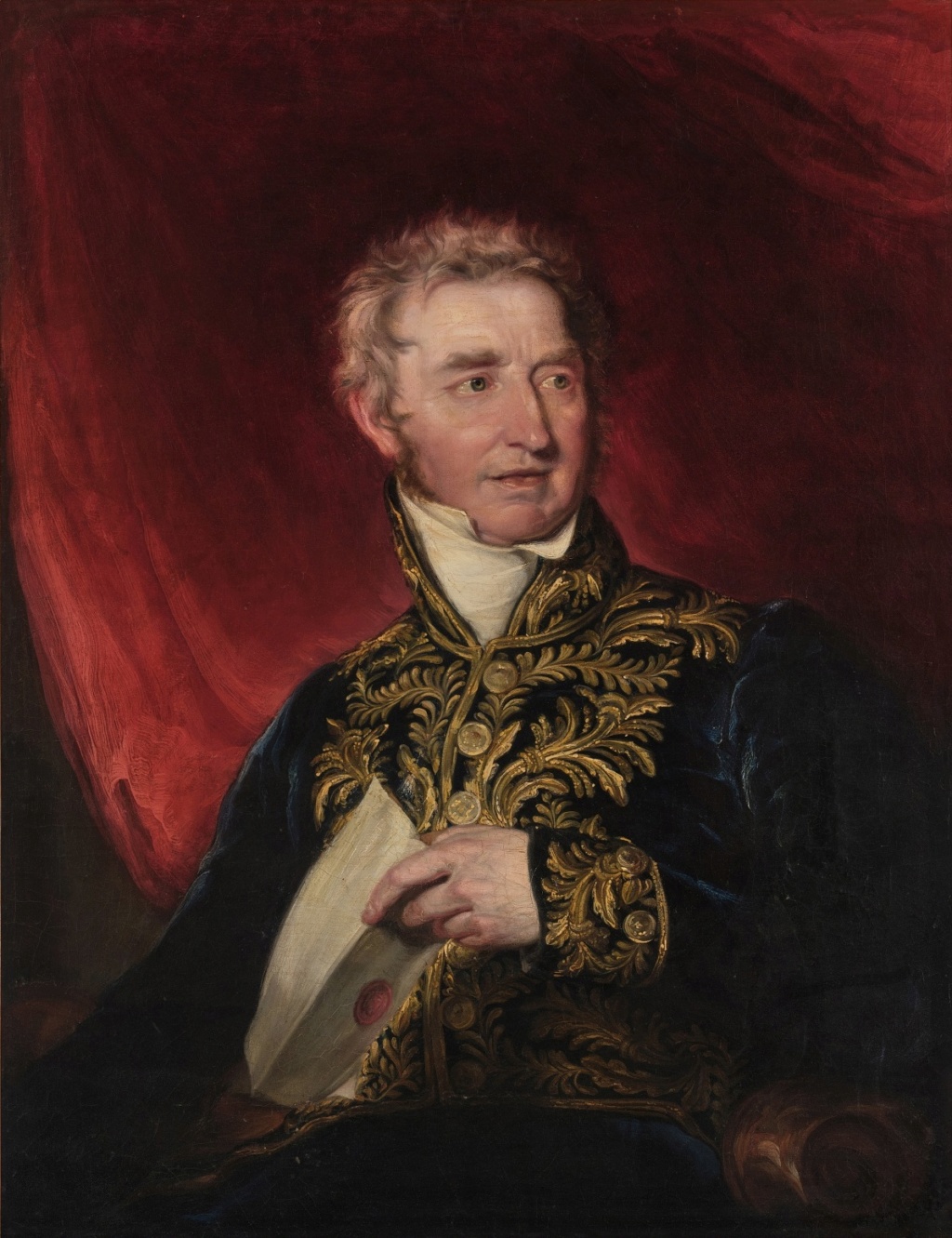
Nelson had sat for Beechey in the winter of 1800–1, when the City of Norwich commissioned a full–length portrait of the locally–born naval hero.8 Both Nelson and the painter are said to have struck up a close friendship, with Nelson eventually standing as honorary godfather to one of Beechey's children. The resulting portrait of the great Admiral was exhibited at the Royal Academy in 1801.

Portrait of Horatio, Viscount Nelson (1758-1805)
By William Beechey
Oil on canvas, 1801
Image : Norwich Castle Museum and Art Gallery / Pinterest
This painting may be the only official portrait to overtly show Hamilton in the guise of Ambassador. One of the most striking features of the painting is the flamboyant gold brocade frock coat worn by the sitter. This coat conforms to the formal court dress of ambassadors, often decorated with gold oak and palm leaves, a fashion which arrived in uniforms around 1800.9 His wife Emma was only painted once in the guise of an Ambassadress. This final canvas by Romney shows her in more formal attire with Vesuvius erupting in the background.
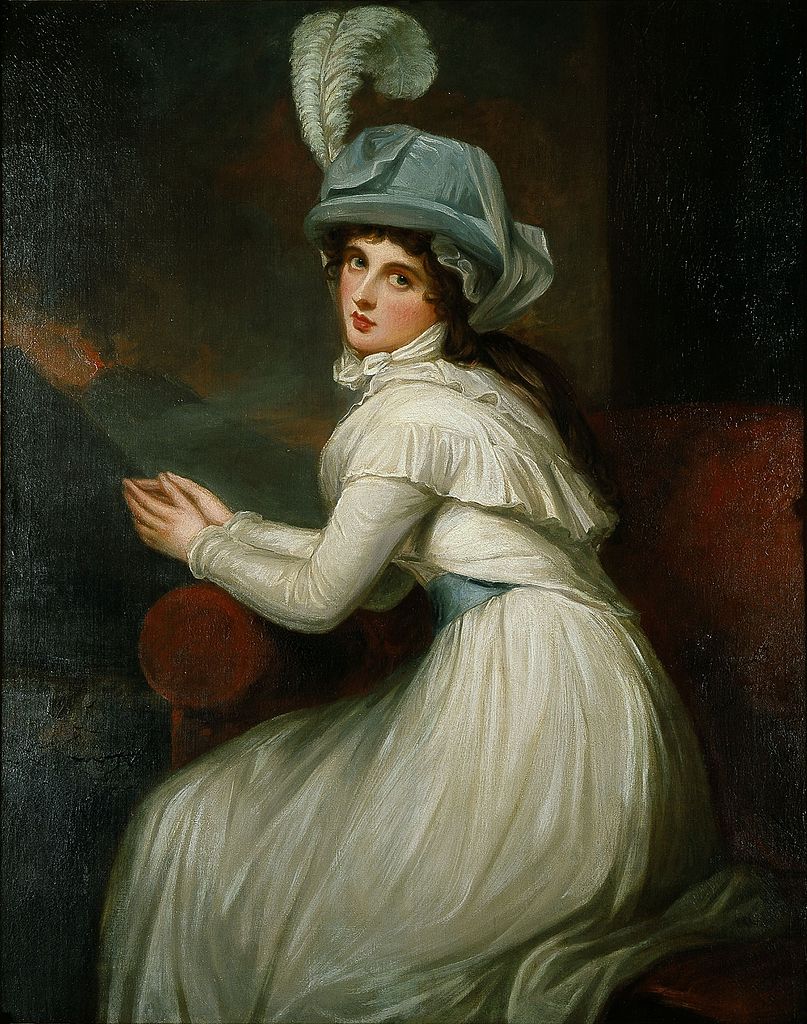
Portrait d’Emma, Lady Hamilton (1765-1815)
By George Romney
Oil on canvas, 1791
Image : Blanton Museum of Art, Austin / Commons wikimedia
Beechey's portrait of Hamilton was exhibited at the 1802 Summer Exhibition of the Royal Academy, an exhibition in which the artist's portraits seem to have created the largest stir.10 Alongside the painting of Hamilton, the artist exhibited portraits including those of HRH the Duke of Cumberland, HRH Princess Augusta, Lady Temple and her son Lord Cobham and the scientist James Watt.
Notes on Provenance
Beechey's portrait is traditionally said to have been gifted directly to Hamilton by Lord Nelson. Despite the importance of this painting, the work is not listed in any of the sales connected to Sir William Hamilton in 1801 and posthumously in 1809.11 Neither is the portrait listed as being among the possessions of Sir William's favourite nephew Charles Francis Greville, who became the heir apparent for his uncle's estates.12 Finally, the painting is not listed in the estate of his other nephew Robert Fulke Greville (1751–1824), whose heirs held onto Romney's portrait of Hamilton until 1917. It is possible that it left Hamilton's collection through a different route, until it reappeared in Germany in the early twentieth century.13
until it reappeared in Germany in the early twentieth century.13
Notes :
* Source et infos complémentaires : Sotheby's Londres - Vente du 8 décembre 2022
Portrait of Sir William Hamilton (1730–1803)
Sir William Beechey (1753-1839)
William Hamilton half-length, wearing diplomatic uniform, with decorative gold frogging, holding a letter in his left hand
oil on canvas unframed: 90.2 x 69.9 cm ; framed: 109.9 x 89.9 cm
Provenance :
Commissioned from the artist by Lord Nelson (1758–1805) by whom gifted to Sir William Hamilton
(...)

Catalogue Note :
This portrait is the last likeness made of one of the most accomplished men of the late eighteenth century, Sir William Hamilton KB, PC, FRS, FRSE (1730–1803). Furthermore, this portrait is significant as it was commissioned by Lord Admiral Horatio Nelson (1758–1805), with whom Hamilton shared his wife Lady Emma in one of Britain's most scandalous ménages à trois.


The sitter
Sir William Hamilton was the fourth son of Lord Archibald Hamilton and his wife Lady Jane Abercorn. He was the grandson to both William, 3rd Duke of Hamilton, and James, 6th Earl of Abercorn. Notably, Sir William's mother Jane was mistress to Frederick Prince of Wales between the years 1736 and 1745, proximity which also came with the responsibilities of Lady of the Bedchamber and Mistress of the Robes to the Princess of Wales. William's true parentage has been the speculation of later biographers, fuelled by knowledge that both he and the young Prince George (later George III) were brought up together and called each other 'brother'.1
Hamilton's career in the army was soon embellished with appointments as Equerry to George Princes of Wales in 1751 and eventually Equerry to George III on his accession in 1760. By far the most important development of his life was his appointment as Envoy Extraordinary to the Court of Naples in 1764.
In Naples a burgeoning passion became an obsession, and Hamilton took his time in Italy to amass a serious collection of antique sculpture, gems and vases.2 Hamilton might be counted among the top tier of antiquarians who enriched the collections of the fledging British Museum during the late eighteenth century. His art collection contained exceptional examples of Old Master portraiture too. This included Diego Velázquez's Portrait of Juan de Pareja (The Metropolitan Museum of Art, New York), and Hans Holbein the Younger's A Lady with a Squirrel and a Starling (The National Gallery, London).3

Sir William Hamilton by Sir Joshua Reynolds
Oil on canvas, 1777
National Portrait Gallery (London)
Image : Commons wikimedia
Hamilton's private life was also not without intrigue. After the death of his first wife Catherine Barlow in 1782, Hamilton managed to secure the affection of Emma Hart, the young and beautiful mistress of his nephew Charles Francis Greville (1749–1809). Although sent to Naples on the ruse that her lover and supporter Charles would follow, she eventually succumbed to a romance with the ageing Hamilton. The mis-matched couple eventually married in 1791 and Emma became Lady Hamilton (...).
Fate would intervene again in 1797, when the dashing Rear-Admiral Horatio Nelson arrived in Naples and quickly captured the attention of Emma, with acceptance from the increasingly frail Hamilton. Emma, Nelson and Hamilton would eventually settle upon a sensational ménage à trois
 , which included touring England together much to the pleasure of crowds waiting to see Britain's naval hero. Dubbed the trio juncta in uno (a reference to the motto of the Order of the Bath, to which both Hamilton and Nelson belonged) the three lived together for many years in apparent harmony.
, which included touring England together much to the pleasure of crowds waiting to see Britain's naval hero. Dubbed the trio juncta in uno (a reference to the motto of the Order of the Bath, to which both Hamilton and Nelson belonged) the three lived together for many years in apparent harmony.
A portrait of Emma Hamilton (1765–1815), bust-length, wearing a white cowl with eyes averted
By George Romney
oil on canvas unframed: 37.8 x 33 cm ; framed: 54.3 x 49.9 cm
Source et infos complémentaires : Sotheby's Londres - Vente Old Masters du 8 décembre 2022
Hamilton was painted by many of the leading portrait painters of the period. His likeness was painted several times by Sir Joshua Reynolds, who depicted him both as a scholar and a collector and connoisseur of antiquities and vases. In comparison to Reynolds's more scholarly depictions, David Allan's ostentatious full-length of Hamilton in the full regalia of a Knight of the Order of the Bath is a more obvious celebration of his achievements at court.4 The large number of official engravings after Hugh Douglas Hamilton's portrait in an oval may well be a sign of Sir William's particular affection for this image.5
George Romney's notable portrait of Sir William, begun in November 1783 when the ambassador was visiting London, also conforms to the previous portraits,6 showing Sir William wearing a red frockcoat, lined with fur, and proudly wearing the badge and sash of the Order of the Bath.

Sir William Hamilton
By George Romney
Oil on canvas, c. 1783-84
overall: 76.8 x 65.1 cm
Image : Ailsa Mellon Bruce Collection / National Gallery of Art
Provenance : Noted as given by the sitter in 1789 to his nephew, the Hon. Charles Francis Greville [1749-1809];[1] (sale, Christie, Manson & Woods, London, 31 March 1810, no. 41); probably bought on behalf of the Hon. Robert Fulke Greville [1751-1824],[2] brother of Charles Francis Greville (...)
The portrait
This painting by Sir William Beechey was the last significant painting of the envoy extraordinaire. Exhibited twelve months before Hamilton died, in April 1803, it was begun shortly after he made his final return to England in 1800. The importance of this last painting is compounded by it having been personally commissioned by Lord Nelson himself, with whom he shared his wife.
 Surviving documentation confirms its prestigious history. Nelson wrote to Beechey on 28 December 1801 explaining; 'I wish Sir William Hamilton to sit to you for his picture a half length the same as my Fathers, and as Sir Wm will probably be with you tomorrow or Wednesday I beg you will have the goodness to prepare the Canvas, etc.'.7
Surviving documentation confirms its prestigious history. Nelson wrote to Beechey on 28 December 1801 explaining; 'I wish Sir William Hamilton to sit to you for his picture a half length the same as my Fathers, and as Sir Wm will probably be with you tomorrow or Wednesday I beg you will have the goodness to prepare the Canvas, etc.'.7
Nelson had sat for Beechey in the winter of 1800–1, when the City of Norwich commissioned a full–length portrait of the locally–born naval hero.8 Both Nelson and the painter are said to have struck up a close friendship, with Nelson eventually standing as honorary godfather to one of Beechey's children. The resulting portrait of the great Admiral was exhibited at the Royal Academy in 1801.

Portrait of Horatio, Viscount Nelson (1758-1805)
By William Beechey
Oil on canvas, 1801
Image : Norwich Castle Museum and Art Gallery / Pinterest
This painting may be the only official portrait to overtly show Hamilton in the guise of Ambassador. One of the most striking features of the painting is the flamboyant gold brocade frock coat worn by the sitter. This coat conforms to the formal court dress of ambassadors, often decorated with gold oak and palm leaves, a fashion which arrived in uniforms around 1800.9 His wife Emma was only painted once in the guise of an Ambassadress. This final canvas by Romney shows her in more formal attire with Vesuvius erupting in the background.

Portrait d’Emma, Lady Hamilton (1765-1815)
By George Romney
Oil on canvas, 1791
Image : Blanton Museum of Art, Austin / Commons wikimedia
Beechey's portrait of Hamilton was exhibited at the 1802 Summer Exhibition of the Royal Academy, an exhibition in which the artist's portraits seem to have created the largest stir.10 Alongside the painting of Hamilton, the artist exhibited portraits including those of HRH the Duke of Cumberland, HRH Princess Augusta, Lady Temple and her son Lord Cobham and the scientist James Watt.
Notes on Provenance
Beechey's portrait is traditionally said to have been gifted directly to Hamilton by Lord Nelson. Despite the importance of this painting, the work is not listed in any of the sales connected to Sir William Hamilton in 1801 and posthumously in 1809.11 Neither is the portrait listed as being among the possessions of Sir William's favourite nephew Charles Francis Greville, who became the heir apparent for his uncle's estates.12 Finally, the painting is not listed in the estate of his other nephew Robert Fulke Greville (1751–1824), whose heirs held onto Romney's portrait of Hamilton until 1917. It is possible that it left Hamilton's collection through a different route,
 until it reappeared in Germany in the early twentieth century.13
until it reappeared in Germany in the early twentieth century.13 Notes :
- Spoiler:
- 1 K. Williams, England's Mistress: The Infamous Life of Emma Hamilton, London 2006, p. 101.
2 I. Jenkins and K. Sloan, Vases & Volcanoes: Sir Wiliam Hamilton and his Collection, exh. cat., The British Museum, London, 1996.
3 https://www.metmuseum.org/es/art/collection/search/437869 ; https://www.nationalgallery.org.uk/paintings/hans-holbein-the-younger-a-lady-with-a-squirrel-and-a-starling-anne-lovell
4 https://www.npg.org.uk/collections/search/portrait/mw02865/Sir-William-Hamilton
5 https://www.npg.org.uk/collections/search/portrait/mw79597/Sir-William-Hamilton
6 A. Kidson, George Romney: A complete catalogue of his paintings, vol. 1, New Haven and London 2015, p. 275, no. 593, reproduced in colour.
7 The original manuscript of this letter was sold in these Rooms on 5 June 1944, lot 202.
8 R. Walker, The Nelson Portraits, London 1998, pp. 120–25.
9 V. Steele, Encyclopedia of Clothing and Fashion, Farmington Hills 2005, vol. 3, p. 362.
10 For a brief summary of the 1802 exhibition see Richard Johns's entry on https://chronicle250.com/1802#catalogue
11 Sir William Hamilton, His sale, Christie's, London, 27–28 March 1801; His sale, Christie's, London, 17–18 April 1801; His sale ('The Property of the Late Sir W. Hamilton, J.B. and the Rt. Hon. Lord Viscount Nelson, deceased...'), Christie's, London, 8-10 June 1809.
12 His sale, Christie's, London, 31 March 1810. This sale contained 78 paintings, including the aforementioned portrait of Sir William and other portraits of his wife Emma by George Romney.
13 ('The Property of Nigel Finch Hatton'), Christie's, London, 18 May 1917, lot 72.
* Source et infos complémentaires : Sotheby's Londres - Vente du 8 décembre 2022
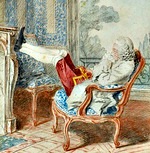
La nuit, la neige- Messages : 18137
Date d'inscription : 21/12/2013
 Re: Sir William Douglas Hamilton (1731-1803)
Re: Sir William Douglas Hamilton (1731-1803)
La nuit, la neige a écrit: Lord Nelson himself, with whom he shared his wife.
... et schpounk ! tout le monde est content .



_________________
... demain est un autre jour .

Mme de Sabran- Messages : 55509
Date d'inscription : 21/12/2013
Localisation : l'Ouest sauvage
 Sujets similaires
Sujets similaires» Le Vésuve, décrit par les contemporains du XVIIIe siècle
» Pierre-Sylvain Maréchal ( 1750 - 1803 )
» Le dernier portrait de Louis XVI (par Joseph Ducreux) et / ou celui de Charles Edward Stuart (d'après Hugh Douglas Hamilton)
» Victor Louis, architecte ( 1731 - 1800 )
» William Turner ( 1775 - 1851 )
» Pierre-Sylvain Maréchal ( 1750 - 1803 )
» Le dernier portrait de Louis XVI (par Joseph Ducreux) et / ou celui de Charles Edward Stuart (d'après Hugh Douglas Hamilton)
» Victor Louis, architecte ( 1731 - 1800 )
» William Turner ( 1775 - 1851 )
LE FORUM DE MARIE-ANTOINETTE :: La famille royale et les contemporains de Marie-Antoinette :: Autres contemporains : les hommes du XVIIIe siècle
Page 1 sur 1
Permission de ce forum:
Vous ne pouvez pas répondre aux sujets dans ce forum

